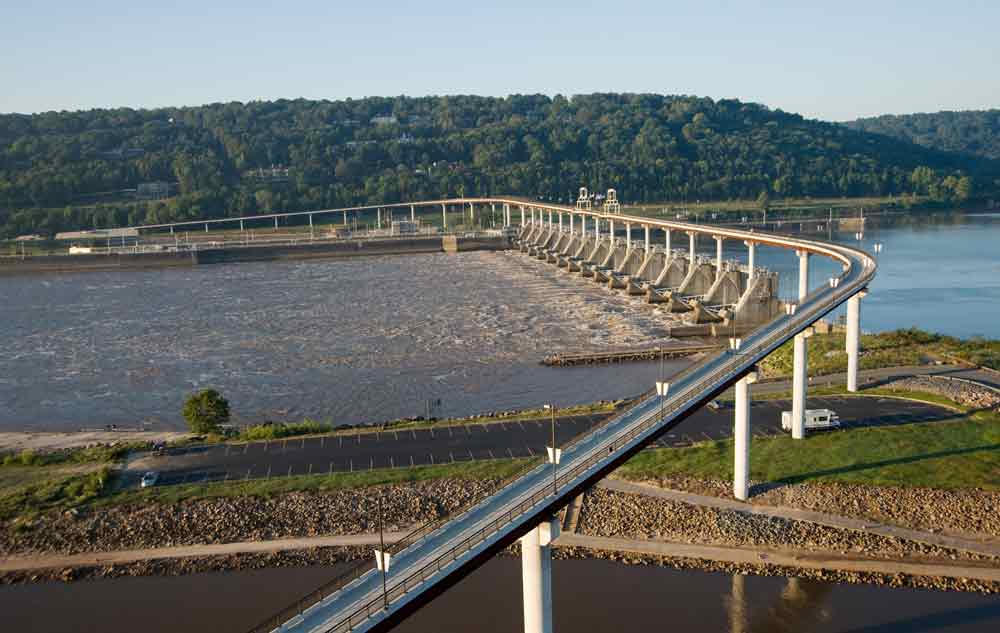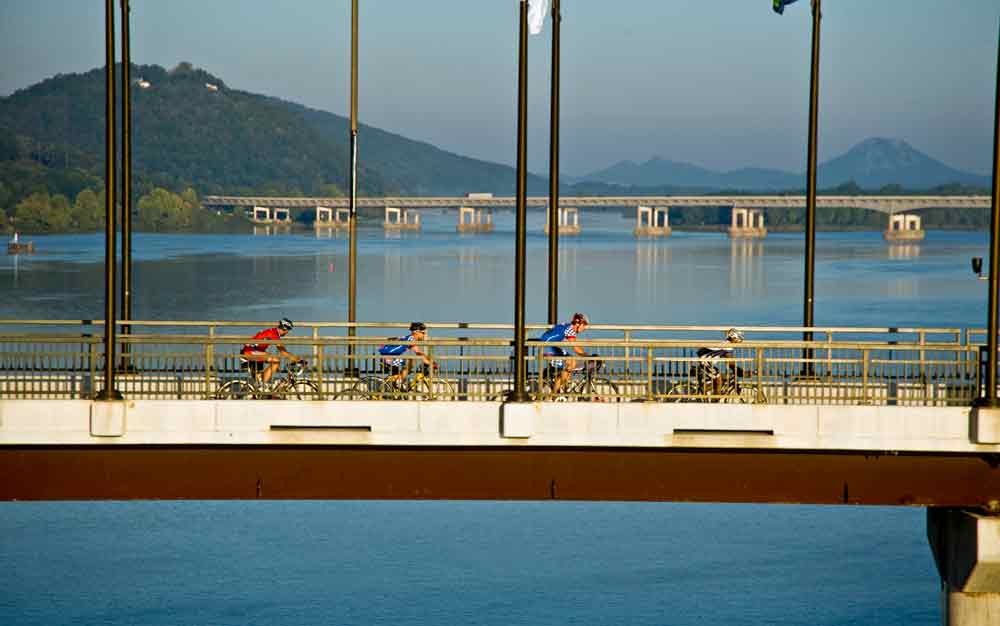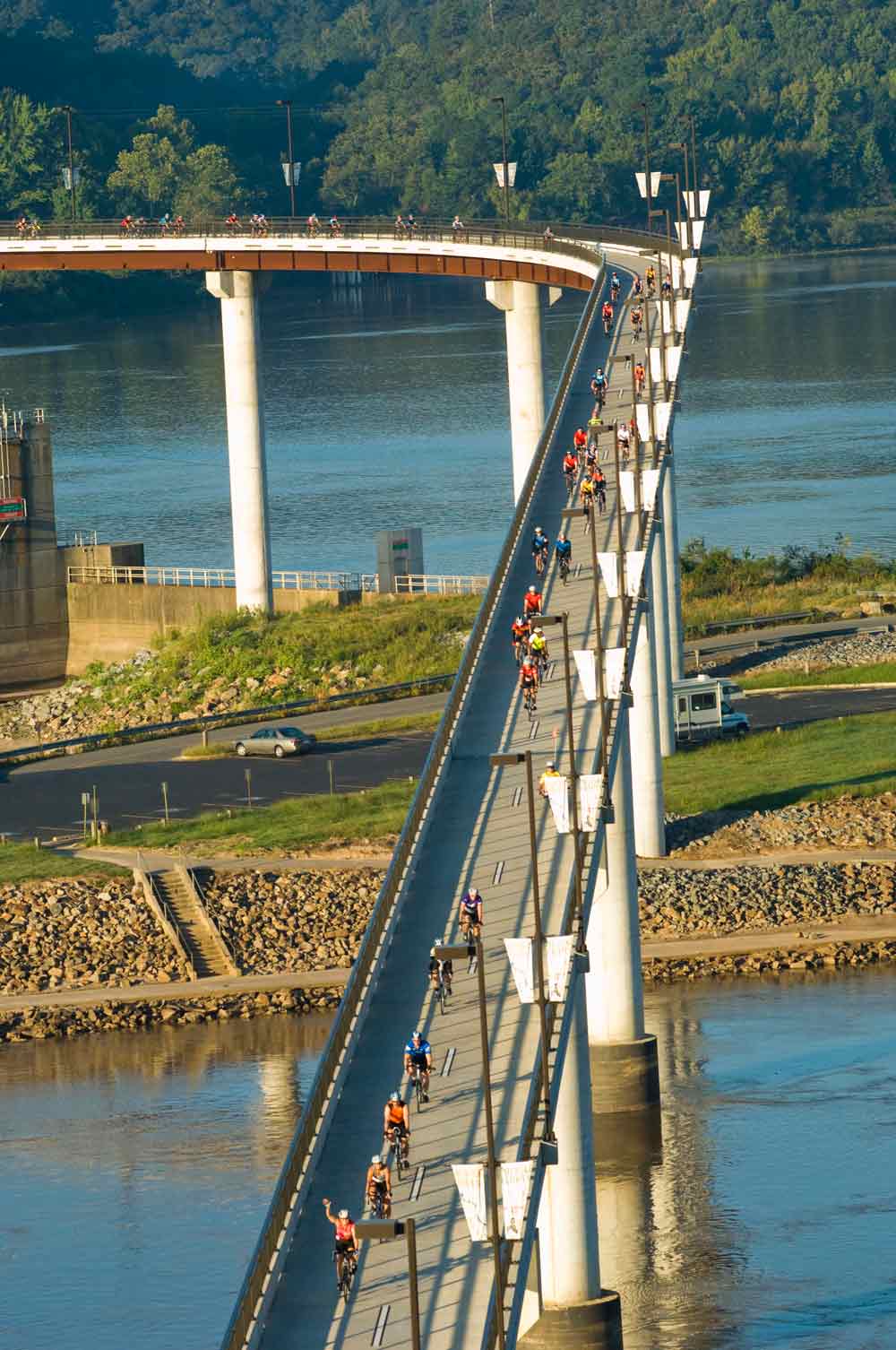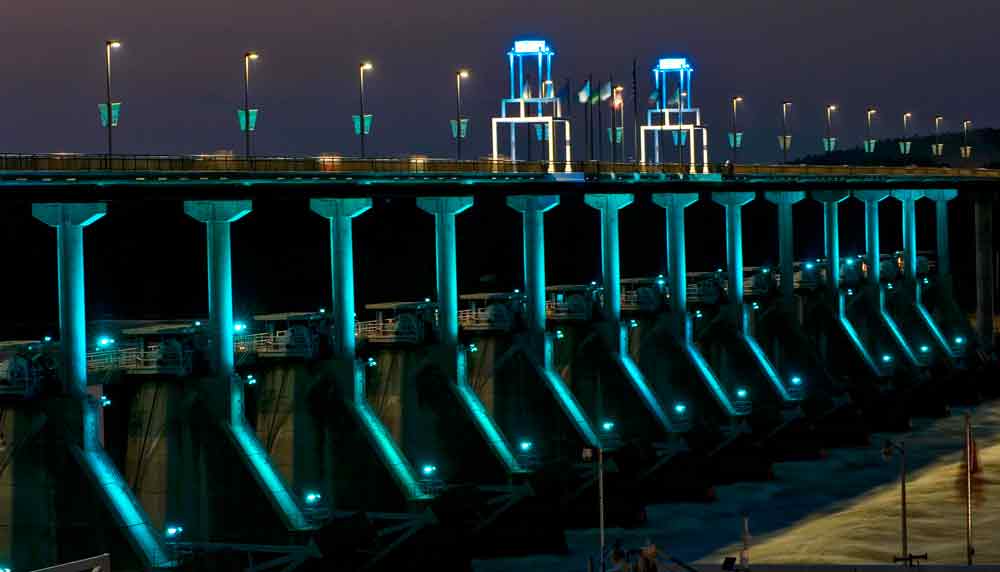The Big Dam Bridge remains one of Arkansas’s most ambitious and defining public infrastructure achievements. Spanning 4,226 feet over the Arkansas River and Murray Lock and Dam, it has connected trails and cities and helped reshape public attitudes about active transportation, recreation, and regional cooperation. Now approaching its 20th anniversary, the bridge is no longer a novelty—it’s a symbol of what vision and political will can accomplish.
The Political Climate: Post-9/11 Tensions, Local Determination
The bridge was conceived at the turn of the millennium—a time of heightened security concerns and increased scrutiny of public spending. Following the September 11 attacks, any infrastructure project that touched federal facilities (like the Murray Lock and Dam, operated by the U.S. Army Corps of Engineers) was subject to intense review. Proposing a pedestrian and bicycle bridge across a major lock system seemed implausible, even laughable, to some.
Yet Pulaski County Judge Buddy Villines, Little Rock Mayor Jim Dailey, and North Little Rock Mayor Pat Hays believed otherwise. The trio pushed forward, navigating federal red tape, skeptical engineers, and public critics. In a time when urban development still largely prioritized cars, their vision for a regional greenway was seen as ahead of its time—idealistic at best, naive at worst.
“The impossible dream,” as Villines often called it, was about more than a bridge—it was about public space, health, and economic development. It was about reclaiming the Arkansas River as a unifying, rather than dividing, feature of the metro area.

Building Cultural Momentum
As the project gained momentum, it attracted support from a growing number of trail users, cyclists, and conservationists. Cultural shifts were underway: cities across the U.S. were beginning to rediscover the value of walkable infrastructure and outdoor recreation. In Arkansas, advocates seized the moment. The bridge became a focal point for a new kind of civic pride—one rooted in access to nature, sustainable transportation, and quality of life.
The name, “Big Dam Bridge,” initially coined as a tongue-in-cheek reference to the massive Murray Lock and Dam, helped capture public attention. It was irreverent, memorable, and uniquely Arkansas. What began as a potentially divisive project eventually earned broad bipartisan support, helped by the fact that it was funded through a mix of local, state, and federal dollars—not a single major tax initiative.
A Platform for Progress
When it opened in 2006, the Big Dam Bridge was the longest purpose-built pedestrian and bike bridge in the country. It connected what would become over 40 miles of trails—linking Two Rivers Park, the Arkansas River Trail, Burns Park, and a growing network of urban greenways. Since then, the bridge has become a fixture in daily life for thousands of Arkansans and a destination for visitors from around the world.
Events like the Big Dam Bridge 100, scheduled for September 27, 2025, draw thousands of cyclists each year and have grown into one of the region’s premier outdoor events. More importantly, the bridge sparked continued investment in trail systems, bicycle infrastructure, and active transportation planning throughout the state.

A Lasting Legacy
In 2025, the Big Dam Bridge feels inevitable. But that’s only because the groundwork was laid by leaders who refused to accept the limits of what seemed politically possible. It stands today not only as a physical connector between two cities, but as a bridge between generations of ideas—linking a past shaped by cars and concrete to a future that values walkability, health, and the shared public realm.
Nearly 20 years after its completion, the Big Dam Bridge continues to remind Arkansans what can happen when bold vision meets determined leadership—and when a community rallies around the idea that public space should be accessible, inclusive, and inspiring.

On a personal note, my wife and I had the honor of participating in the ribbon cutting on September 30, 2006, as part of the first organized group ride across the Big Dam Bridge. Since that day, we’ve crossed it countless times—on foot and by bike, in early morning light and under evening skies, during commutes, group rides, runs, and community events, or simply to enjoy the view from the other side. In every season and at every hour, the bridge has revealed itself as one of the most diverse and welcoming spaces in central Arkansas—a place where people of all ages, backgrounds, and walks of life come together. It’s a powerful reminder of what inclusive public infrastructure can do, and a call to create more spaces like it—places where everyone feels they belong.
All photos for this article were provided by the Arkansas Department of Parks, Heritage and Tourism.
This article was originally published on ArkansasOutside.com, your trusted source for outdoor news and updates in The Natural State. Unless otherwise credited, all photos included in this piece are the property of Arkansas Outside, LLC. We take pride in sharing the beauty and adventures of Arkansas through our lens—thank you for supporting our work!







One Response
They need to fix the lights at this bridge and Two Rivers. It’s sad.